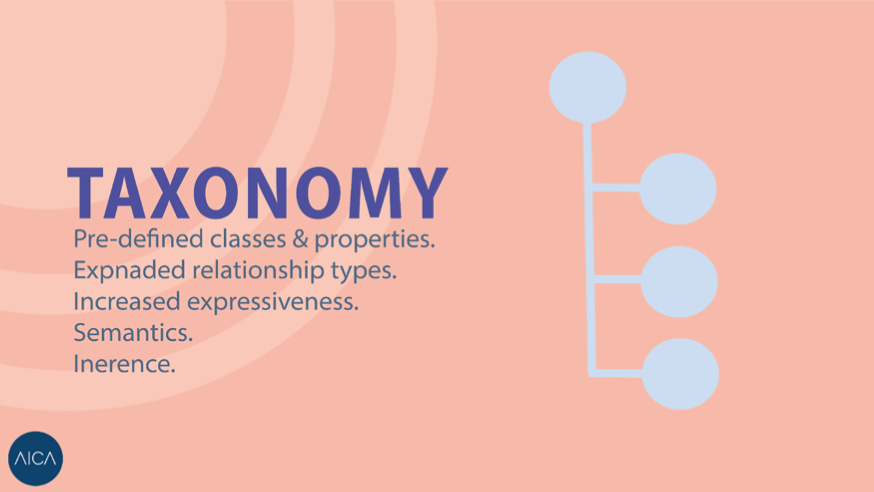The digitalisation of businesses has led to a rise in information which is becoming more accessible every day. Businesses must be able to search for that information within their own systems and online and store it in ways that make it easy to interpret. This is where ontologies and taxonomies come in and save the day.
What is a taxonomy
A Taxonomy is a way of categorising items into a set of hierarchical categories. Therefore, taxonomies make it easier for users to find relevant information or products under a title or theme. For example when shopping for a shirt on a website you will have categories that streamline the results to focus on the relevant shirts that you are looking for (Shirts, Male, Medium, Blue). As a result, you do not have to spend time sifting through irrelevant information, which helps with efficiency and user experience. Taxonomies provide structure to organisations and many other application fields. The use of taxonomy in business is extremely important as efficiency in both operations and with customers is vital. It is imperative to save both customer and business time and energy, and taxonomy does just that.

Taxonomies: Why are they important?
Taxonomies are a crucial internal component for the success of your business. On a website, you will not find a medium shirt for sale in the large category or a computer for sale in the clothing aisle in a shop. This is all due to the implementation of taxonomies to categorise products and data which in return makes running a business easier and creates a better experience for customers. In order to attract new customers and retain them, you must create ease of use. Taxonomies are an effective way to increase sales and target your audience more directly. Taxonomies allow businesses to directly target customers at specific niches and as a result there may be an increase in sales and less time and resources spent on marketing to an audience that is not interested.
